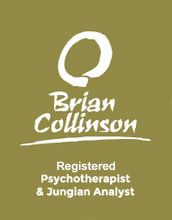Creative in Life: Finding the Wellspring Within Ourselves

How do we find and stay with that which is creative in life? Many times, it seems so easy for life to get submerged in routine and rote procedure. This can be true at any age, but people often feel it particularly acutely around the time of midlife transition, or later, at the time of late life transition.

There’s a deep natural desire to express who we fundamentally are, in some way, shape or form. That desire to be creative in life is, as Jungians say, archetypal. Human beings inherently are creators.
In an earlier post, I discussed psychoanalyst Thomas Ogden’s insight that
To be alive (in more than an operational sense) is to be forever in the process of making things of one’s own
This is true, or, at least, it has the potential to be true. Every single act that we do has at least the potential to be creative, and this includes the most mundane and seemingly routine of activities—if they are infused with a conscious and creative awareness. This is what Ogden seems to mean when he references the idea of “making things of one’s own”.
Yet, what is it to “make things of one’s own”? You and I can probably think of times in our lives when we’ve done something creative, and there’s been a sense of beauty and meaning about it. What exactly goes on inside of us when we do something creative?
What is Creativity?
What exactly is it to be creative in life? When we’re creative, in the sense of genuinely making things of our own, there’s a sense of being fully involved and “expressing” ourselves—letting some part of ourselves go out into the world.
There is also often a sense of being fully alive. We can create in an incredible range of ways, whether it’s a watercolour painting, a poem, a beautiful garden or a visually beautiful and wonderfully flavoured meal. However we do it, there is also a sense of participating in something that is bigger or deeper than our everyday ego.
Jung calls this sense of connection “living a symbolic life”:
Only the symbolic life can express the need of the soul – the daily need of the soul, mind you! And because people have no such thing, they can never step out of this… banal, grinding life in which they are “nothing but.” . . .
When Jung is using the word “soul” here, he is not using it in the religious sense of the word. Rather he is referring to connection with the life-giving and creative parts of ourselves deep within our unconscious.
if you doubt that there is a creative part of you in the unconscious, my strong recommendation would be to explore your dreams. Nor is it only Jungians who are aware of this. Consider these words from the rigorous and empiricist neuroscientist Dr. Matthew Walker, Director of the Center for Human Sleep Science, UC Berkeley:
From [the] dreaming process… have come some of the most revolutionary leaps forward in human progress… We also know of precious artistic gifts that have arisen from dreams. Consider Paul McCartney’s origination of the songs “Yesterday” and “Let it Be”. Both came to McCartney in his sleep…. The creative muse of dreaming has also sparked countless literary ideas and epics [including Mary Shelley]…. Then there is the French surrealist poet St. Paul Boux [who] before retiring every night… is said to have hung a sign on his bedroom door that read “DO NOT DISTURB: POET AT WORK.”.
I wonder what your dreams might be able to show you about the greater, creative part of yourself. What might want to be expressed?
If We Turn Away from Our Creative Self…
None of this is to say that dreams are the only source or wellspring of creativity in our lives. The unconscious dimension of who we are, and our connection with the broader archetypal unconscious, can appear creatively in many ways.
Yet, for all kinds of reasons, people choose to turn away from, or repress that inner creative impulse. So, what happens to us when we do that?
When we leave behind the creative in life, we’re left with just being alive “in an operational sense”, as Ogden puts it. People end up stuck in “the banal, grinding life in which they are ‘nothing but'”, as Jung phrases it. Nothing but the dull plodding part of themselves that meets the expectations of others. The socially conditioned part that ticks the boxes and pays the rent, without hope for anything of greater significance, or that has any magic.
There is no one way to express our creativity. But we need to find a creative dimension to our lives if we’re to gain a sense of meaning and value.
Our Power to be Creative in Life
There is great value in exploring the kind of creativity that wants to emerge from your own real life. There’s almost no limit on the form that might take. It could be quilting, stand-up comedy, cooking creatively, writing that novel, or creating that landscape painting. Or, any of an almost infinite list of other things that draw you or call to you, in your uniqueness. The important thing is that we start to listen to our own unique selves.
Sometimes when people are dealing with depression or anxiety it can be of great help to find a form of expression that brings out of us what’s going on inside. This might be drawing, painting, collage, working with clay—any of quite a number of things.
A supportive relationship with a Jungian /a-midlife-transition can be of tremendous value when we are seeking to explore our creativity. Having the opportunity to open up the creative side of ourselves within the container of an affirming analytical relationship can be tremendously helpful and healing
Wishing you every good thing on your personal journey,
© 2022 Brian Collinson, 2238 Constance Drive Oakville, Ontario (near Mississauga)
